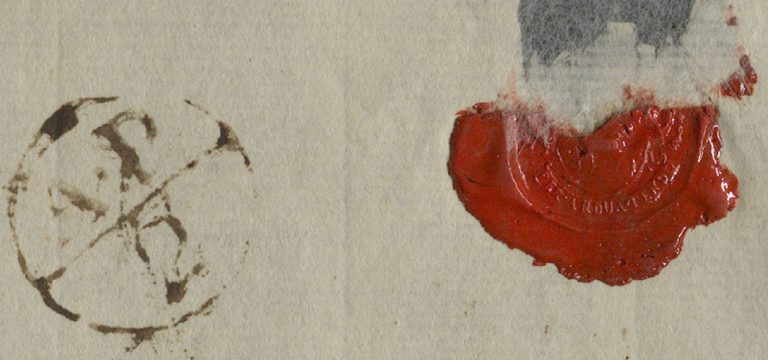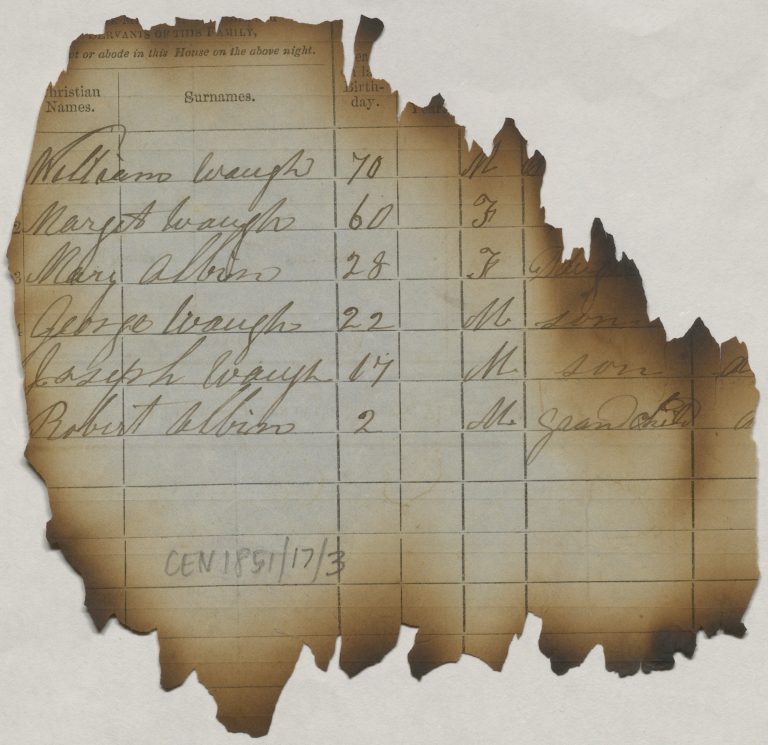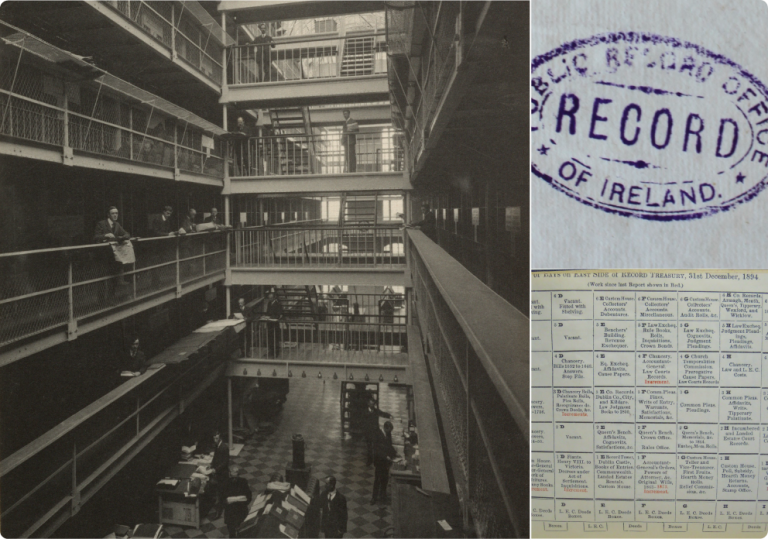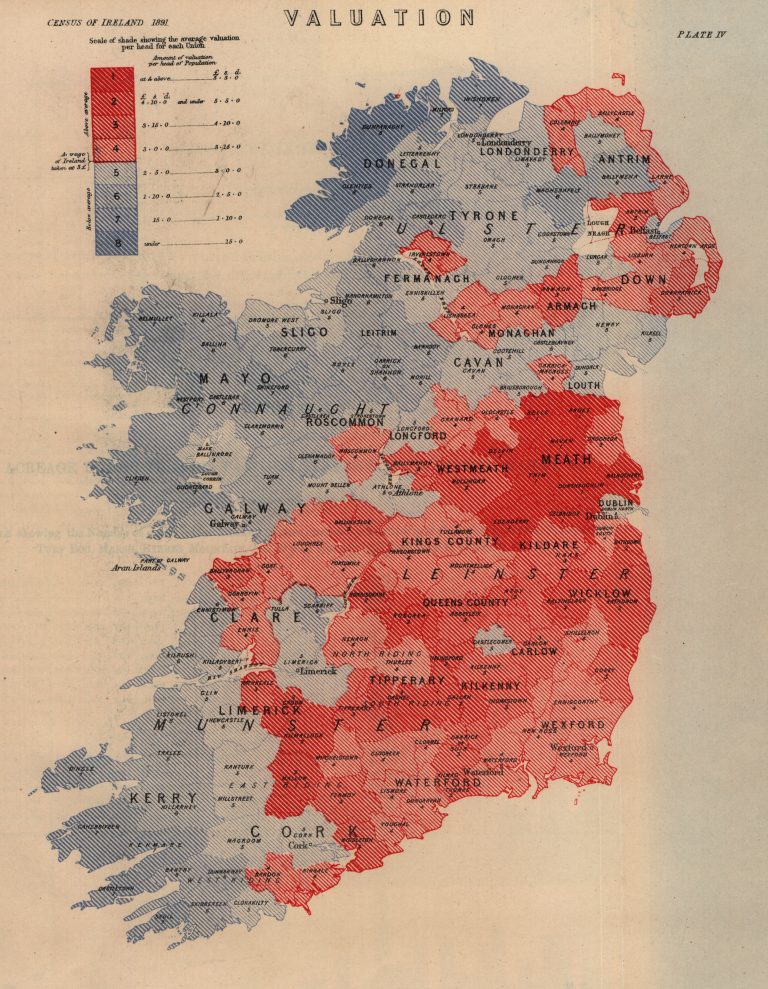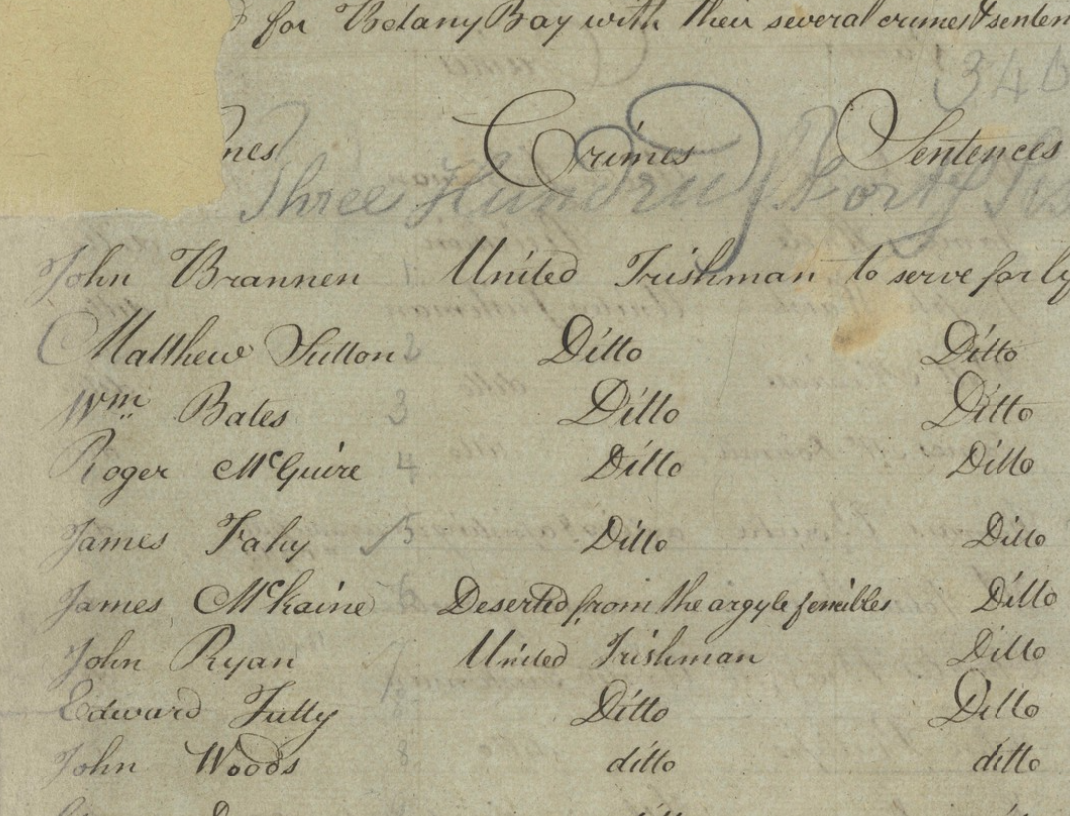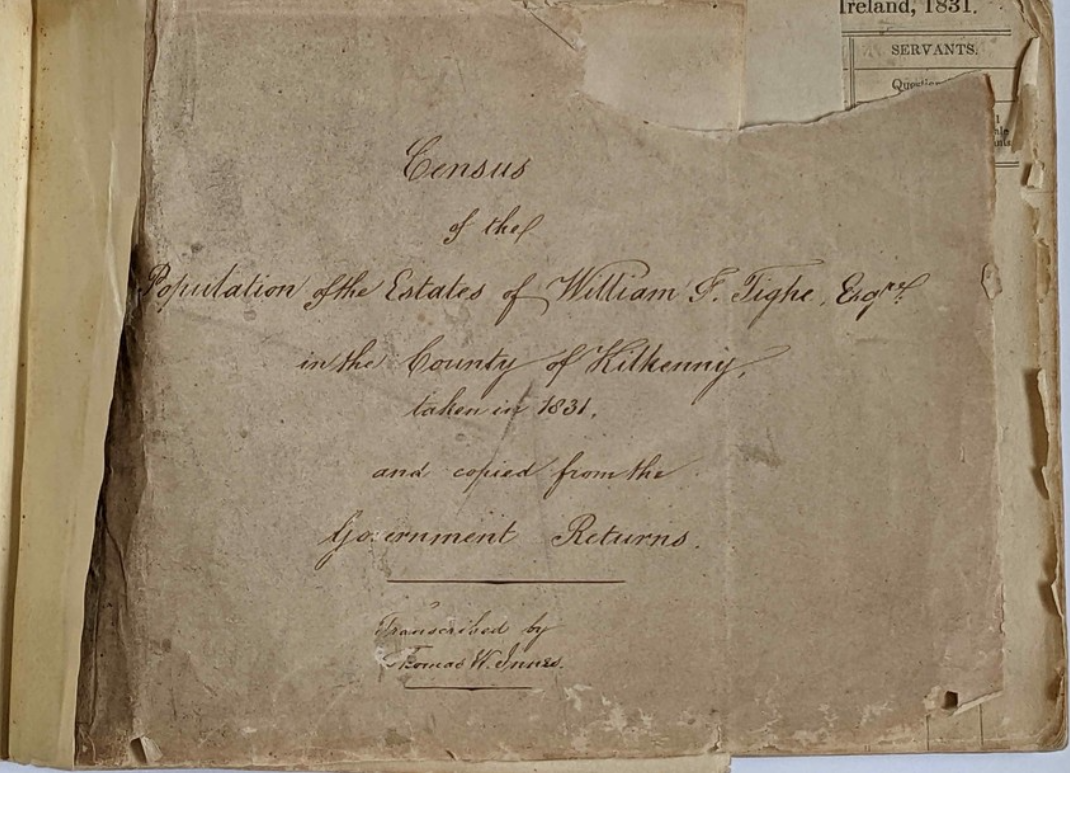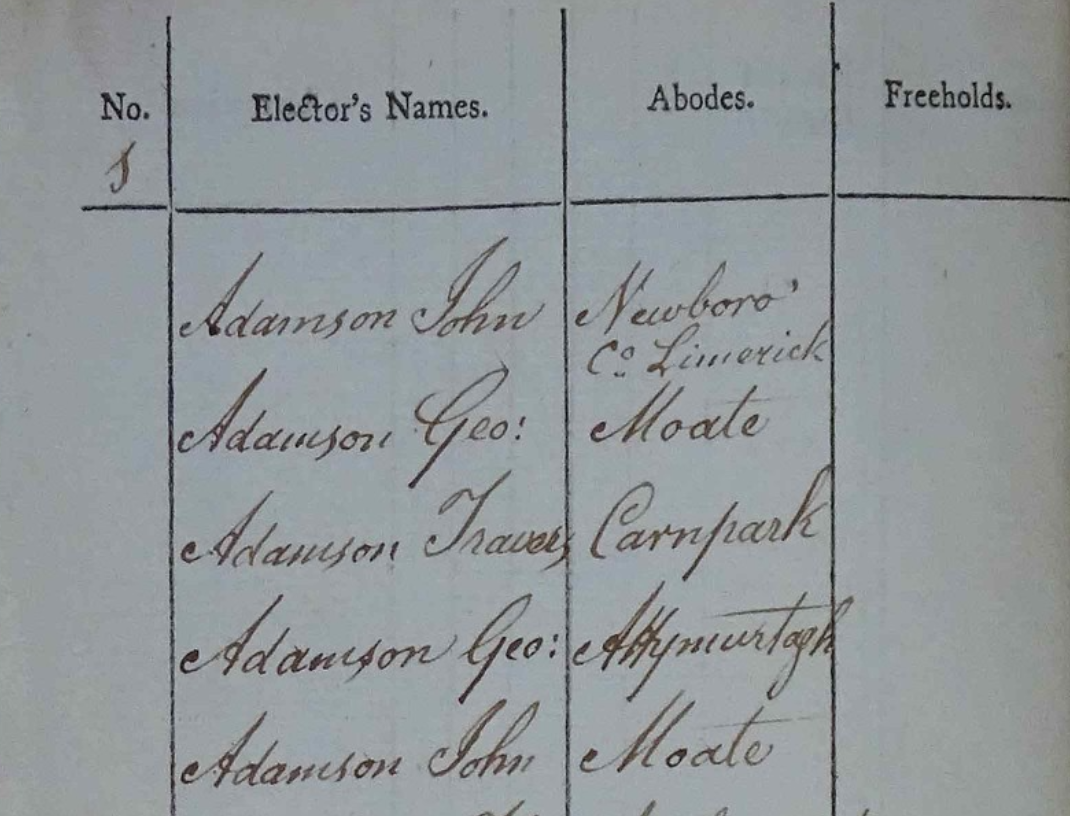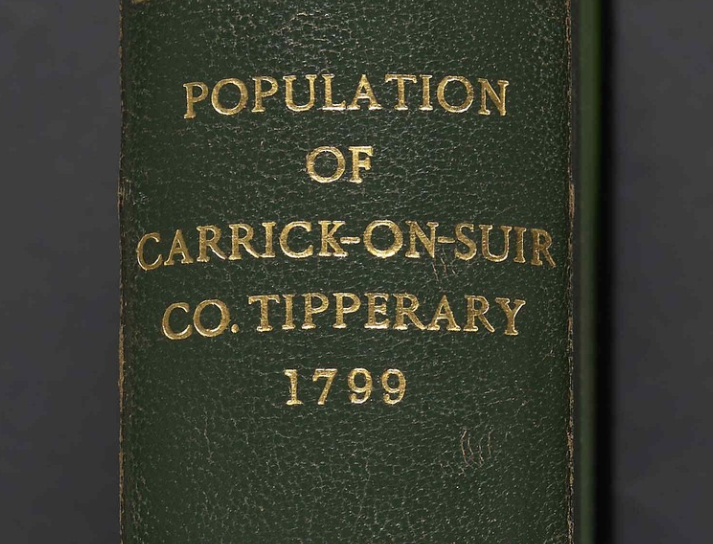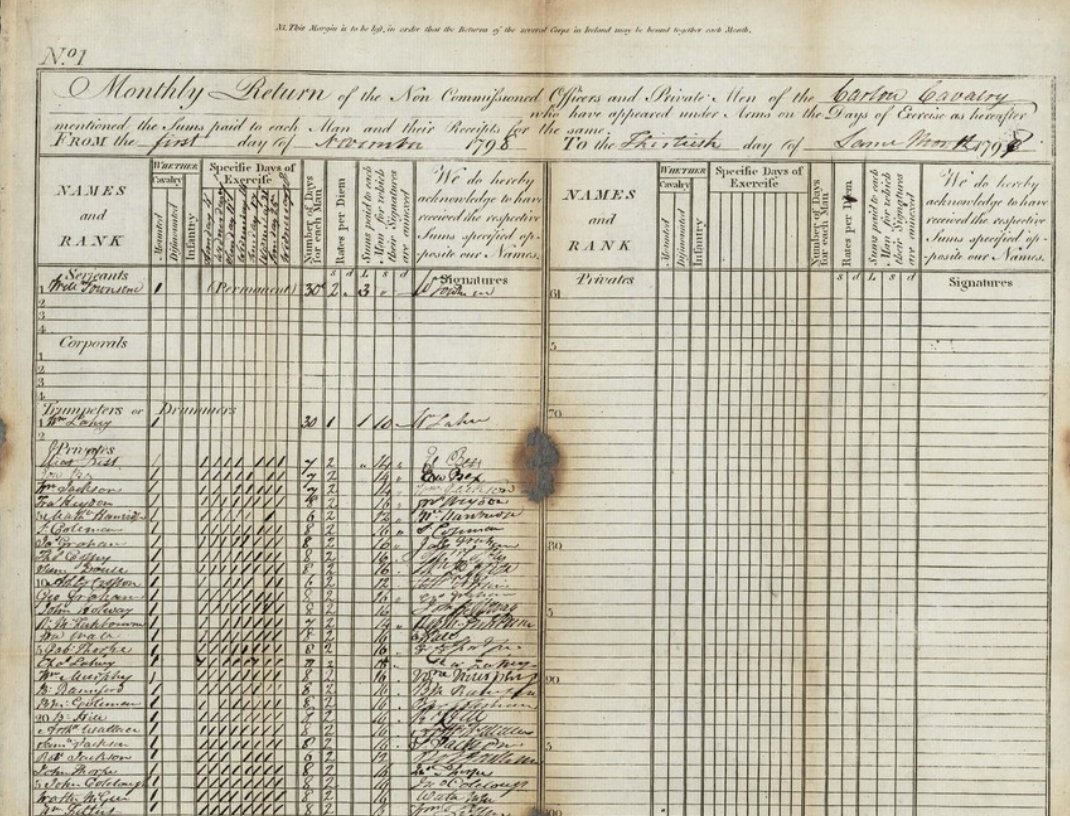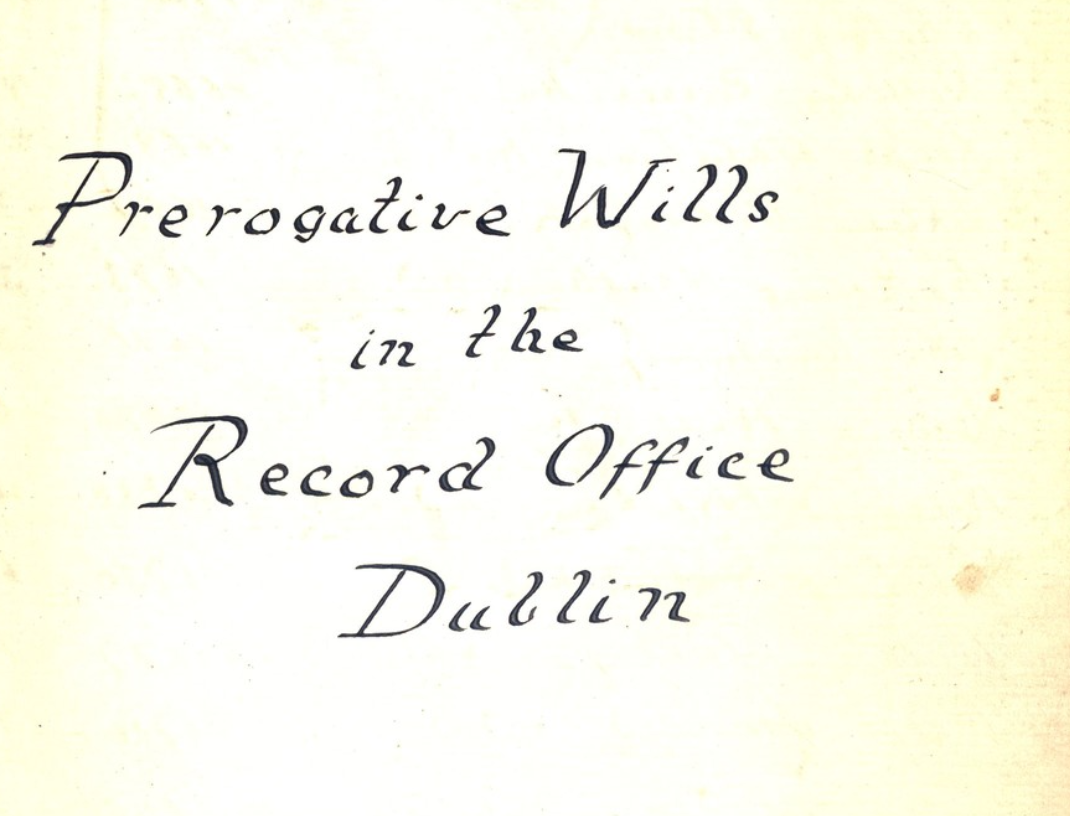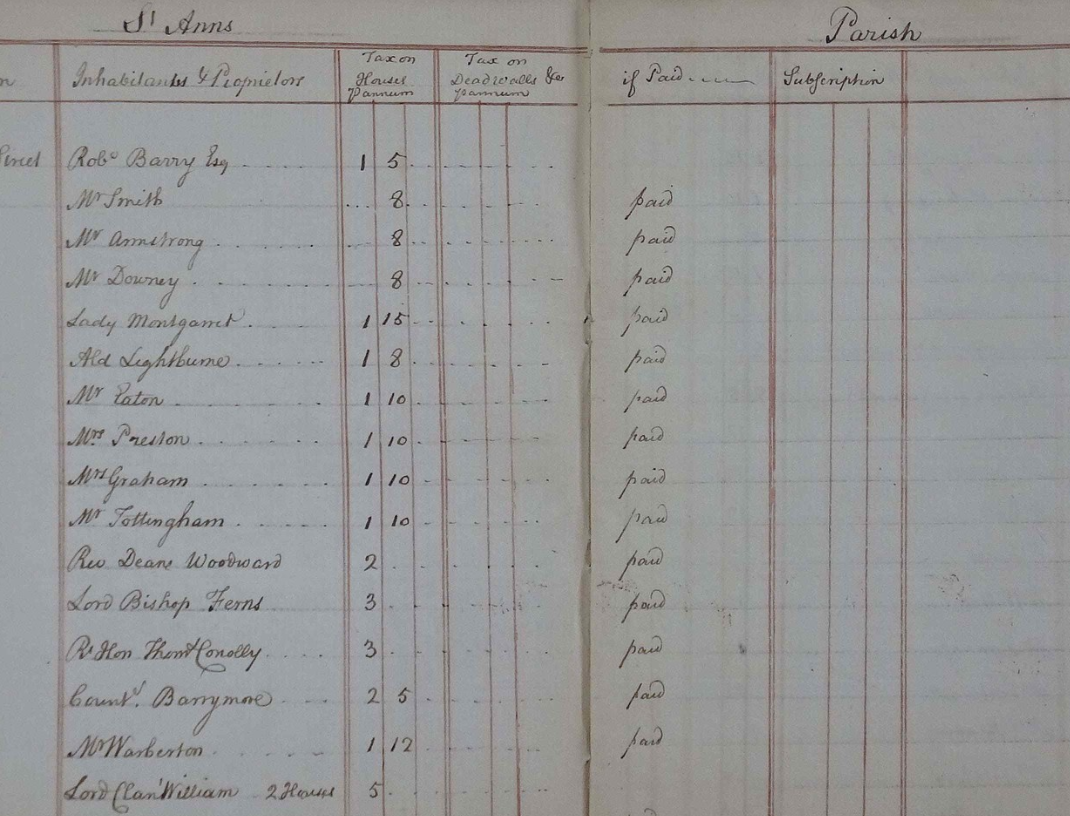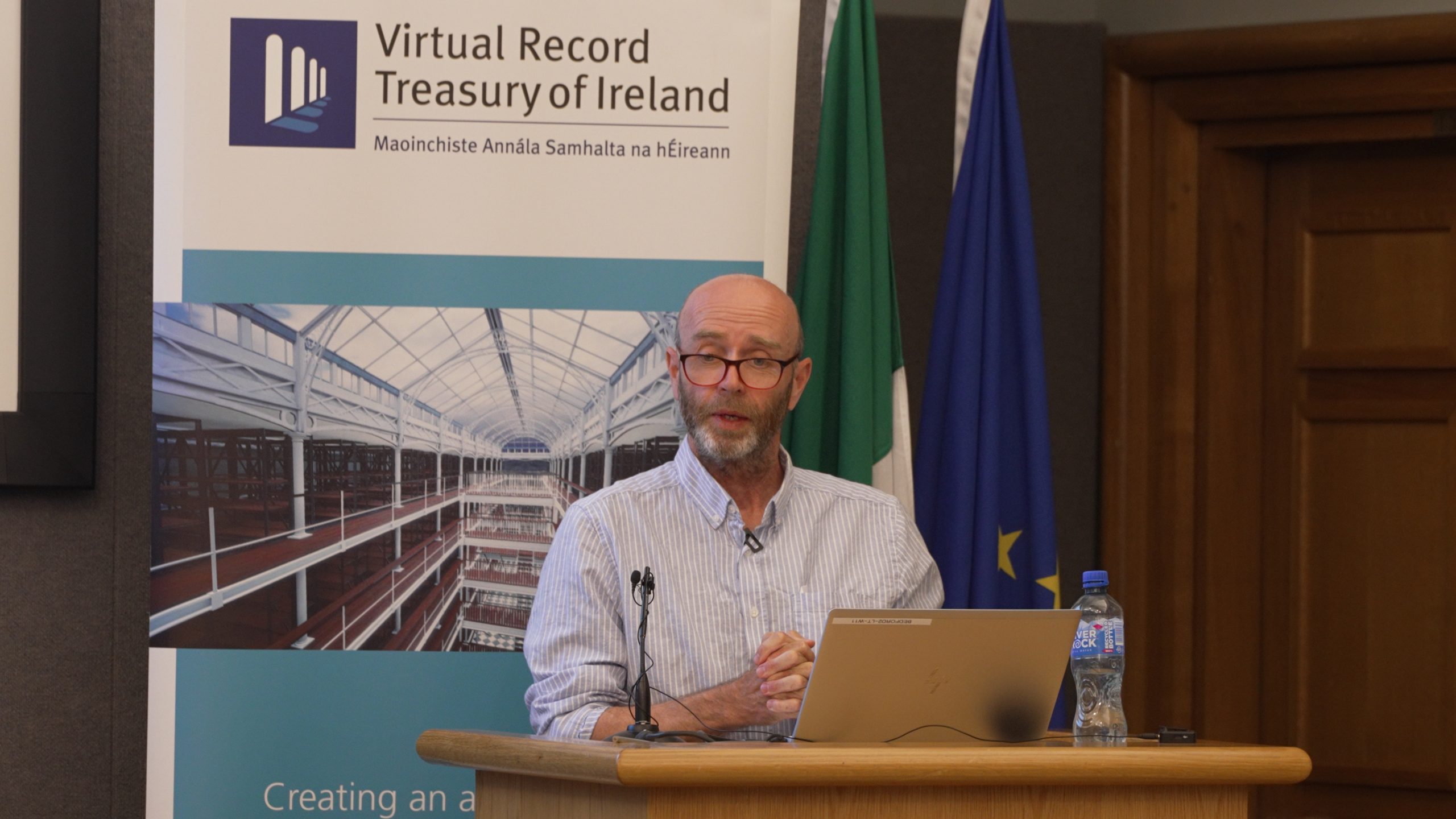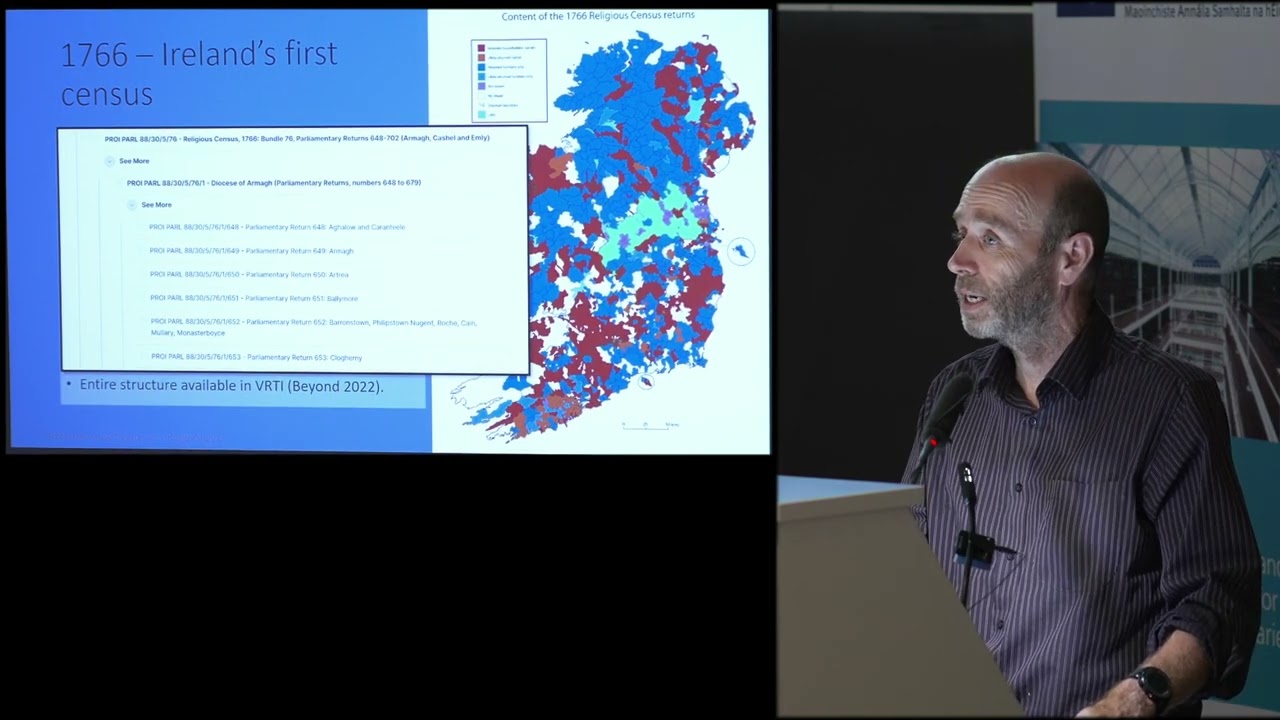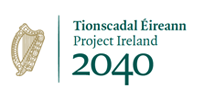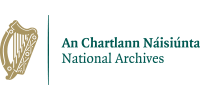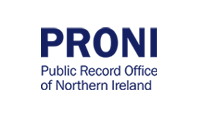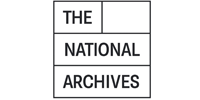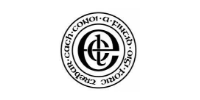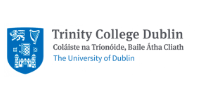
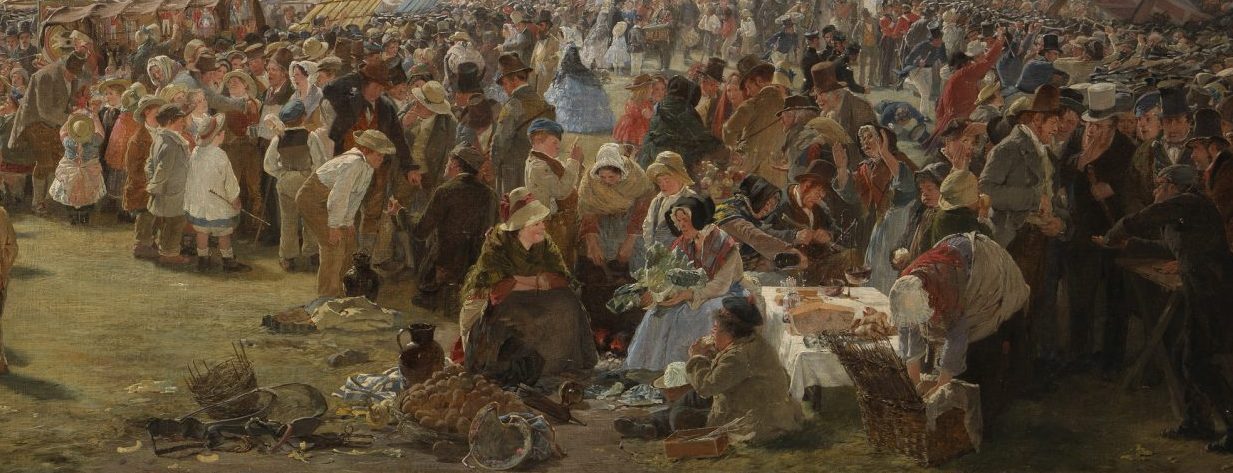


via the Knowledge Graph
 Explore Places
Explore Places What’s in this Portal?
The Population Portal brings together tens of thousands of names, and detailed census reports, from Ireland between the 17th and 19th centuries, allowing you to search them as one collection. Click Explore Places above to view our latest feature — the 1821 Census Gleanings Map. Curated by Dr Brian Gurrin.
Gold Seams
1766 Religious Census
18th CenturyIreland's First Census. Curated by Dr Brian Gurrin. Generously supported by the Fitzpatrick Family Foundation.
Gleanings and Fragments from the Censuses of Ireland, 1813–1891
19th centuryCurated by Dr Brian Gurrin

Curated Collections
Deputy Keeper’s Reports
19th — 20th centuriesCensus Reports, 1821-1891
19th century
Historical background
For centuries, counting the population has been a matter of concern in Ireland, for reasons of security, taxation and planning. For government purposes the numbers were more important than the names, so when we search a historical census for family history we are using it for a purpose it was not designed to fulfil. But that is where the challenge – and fun – of genealogy comes in.
Start your journey with our latest feature: the 1821 Census Gleanings Map. Find out where rare census material has survived and discover names captured within these records.
The first notable attempts to estimate the scale of the Irish population were undertaken by Sir William Petty in the second half of the seventeenth century, a Cromwellian official who arrived in Ireland in 1652. In the late 1650s he organised the mapping of most of the country (the Down Survey) which enabled the confiscation of land held by Catholics and its transfer to British Protestants. To support new taxes introduced in Ireland in 1659-60, Petty compiled lists of taxpayers. Though rough-and-ready, his figures are a reasonable calculation of the number of taxpayers, but not of the entire population.
Security concerns prompted the government to investigate the numbers of Catholics and Protestants in Ireland, and censuses were conducted during the 1690s and 1730s, and additional taxpayer lists (hearth-money rolls) were compiled over the same period.
The first attempt to survey the population nationally was the 1766 Religious Census, ordered by the Irish parliament in Dublin, which aimed to record the name of every householder in every parish in Ireland.
Following the Act of Union (1800) the parliament of the new United Kingdom of Great Britain and Ireland first began counting the Irish population in 1813. This challenging experiment had mixed results but it led to the truly remarkable census of 1821 which counted every individual – not just the head of the household – across Ireland. This level of ambition was not repeated for 1831.
The 1841 census marked a departure in Irish population recording. Up to this point a local official, the census enumerator, called to each household over a fixed period to record the details. Now every householder would, in theory, complete their own form on the same night.
The census continued in this format up to 1911, with a growing range of questions recording occupation, education, housing, religion and the ability to speak Irish.
From 1921 the situation was transformed with separate censuses taken in the Irish Free State and Northern Ireland, and the census years being disrupted by the War of Independence (1919 – 1921).
Losses and Survivals:
Many of the census records from before 1813 were lost in the destruction of the Public Record Office of Ireland (PROI) in 1922. The records from 1813 and 1821 – 1851 were almost entirely destroyed in 1922. Records from 1861 – 1891 were not held in the PROI but were officially destroyed; some during the late nineteenth century when they were considered no longer useful, and others during the First World War when they were pulped to make paper.
In the Virtual Treasury’s Population Portal you can explore all pre-1901 census records, originals or transcripts, that our partner archives and libraries at home and abroad have shared with us. These include many thousands of individual names from pre-and post-Famine Ireland which would have been lost forever without the dedication of early genealogists and researchers – and the detailed detective work of Dr Brian Gurrin, Census Expert with the Virtual Treasury.
On the website of the National Archives, Ireland you can search original census records for all of Ireland from 1901 and 1911, and surviving originals for some regions from 1821, 1831, 1841, 1851. In April 2026 the National Archives Ireland will release the digitised 1926 census for the 26 counties of the Irish Free State.
The 1926 census of Northern Ireland no longer survives.
What can I find here?
Explore early population records from the 1700s, and tens of thousands of names transcribed from the nineteenth-century census, all searchable and listed by year and location.
- The Census Gleanings Gold Seam (1813 – 1891): a rich collection of names transcribed from the nineteenth-century census, with an interactive map to help you start your search.
- The Census Reports Curated Collection (1821 – 1891): published reports of populations statistics for every county, showing barony and townland figures; the primary tables showing housing and occupation; appendices.
- The 1766 Religious Census Gold Seam (1766): over 50,000 names and tables of population statistics for much of Ireland
- Individual smaller population reports and name lists (1740 – 1913): private censuses, sample lists of tenants on estates, local taxation and other lists
A note on locations
Over the centuries Ireland has been divided up into a variety of local or regional districts for administrative purposes. Counties are the main administrative districts. Some have changed their names (e.g. King’s County became County Offaly, and Queen’s County became Count Laois), and some urban areas were once separate county units (e.g. the county of the City of Galway or the county of Carrickfergus), and a few county borders were adjusted in the 19th century, but most counties have remain unchanged.
In earlier centuries the country was divided into hundreds of Baronies. The boundaries of Baronies do not line up with county boundaries so it is common for a Barony to spread across two or more counties. At a more local level, Ireland was divided into over 2,500 Civil Parishes. In some cases the Civil Parish boundary matches the boundaries of modern religious parishes, but often they are different. The smallest unit of local administration is the Townland, there are over 60,000 of these.
So for family history and local studies an address may be a combination of: County / Barony / Civil Parish / Townland.
In a town or city it might include: City / Barony / Civil Parish / Street.
Two free websites are useful for finding an historical location:

